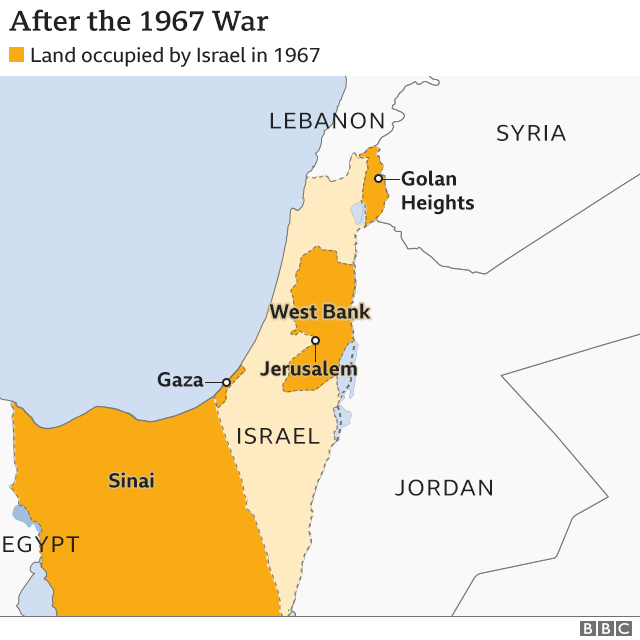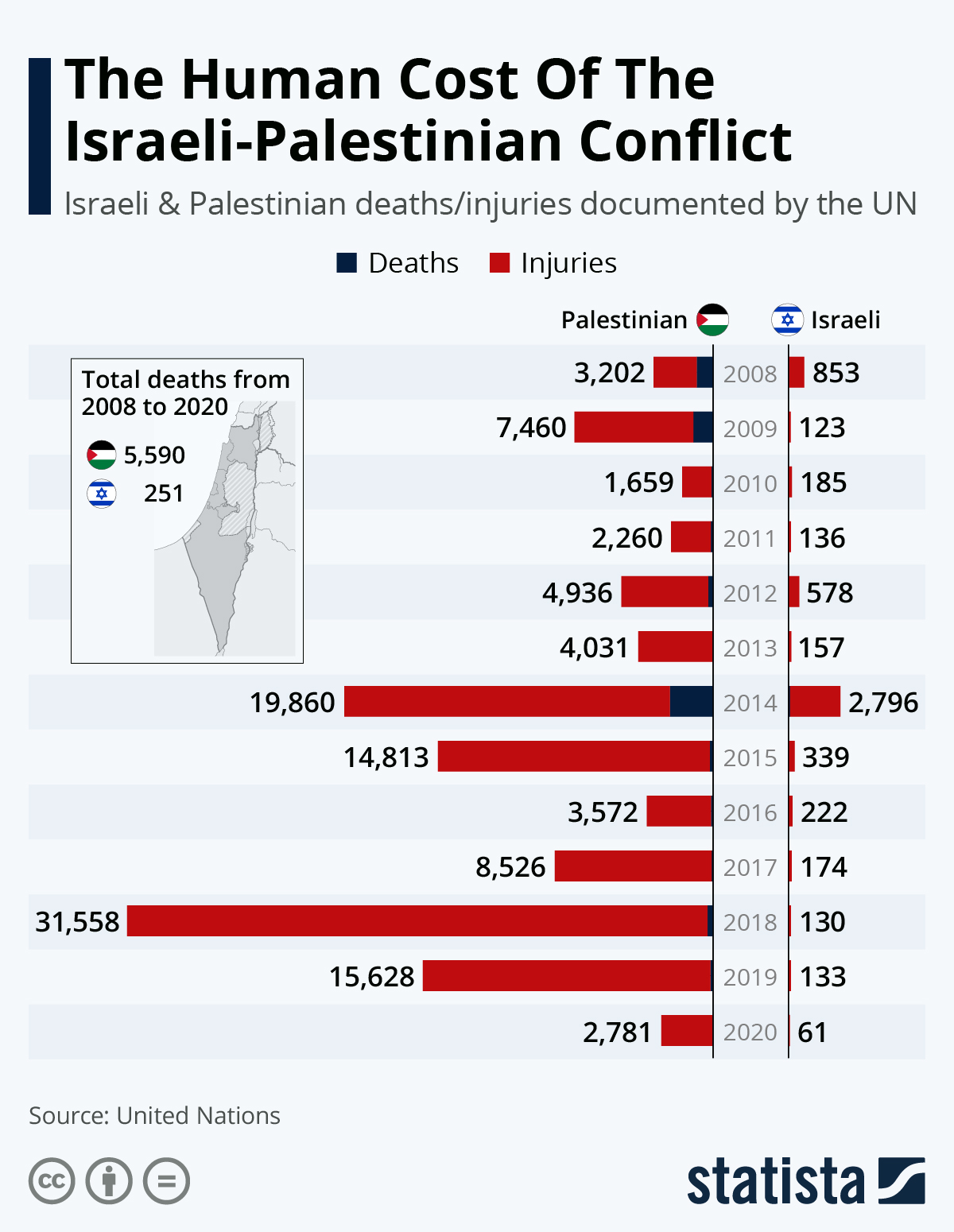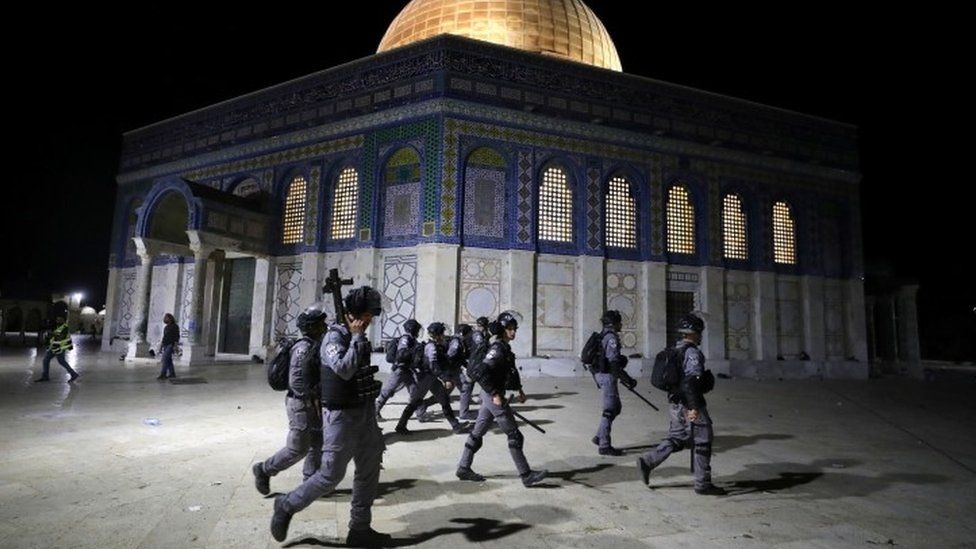BEFORE WORLD WAR-1
A long history of antisemitism (discrimination against Jews as a religious, ethnic or racial group) in the Europe and many parts of world led to the rise of the Zionism (a feeling of Jewish nationalism) which espoused the creation of a Jewish homeland in the region of middle east(under the Ottoman Empire).
AFTER WORLD WAR-I
After the Ottoman empire was defeated in World War 1, the complete region of Palestine came under the British mandate. The land acquisitions for the settlement of Jewish immigrants led to a feeling of dispossession among the Arab population. This led to increased conflicts among the Jewish and the Arabs, and the rise of Palestinian Nationalism in response to Zionism. Religious riots were organized against the Jewish Population in various cities in the 1920s and 1930s.
After World War 2, the Jewish resistance organizations were skeptical of the British policies and coordinated armed attacks against the British military in addition to the Arab population. In 1947, the UN General Assembly proposed a two-state solution: “The entire region would be divided into an Arab state and a Jewish state. Further, Jerusalem and Bethlehem would be directly controlled by the UN". The approval of the partition plan contributed to large-scale conflicts and violent clashes between Arabs and Jews. After the British mandate over Palestine terminated, Israel declared its Independence in 1948. Disappointed with this partition plan, the armies of Jordan, Syria, Egypt and Iraq waged a war against Israel which was won by Israel and it annexed territory beyond the boundaries set by the UN Partition plan. The Gaza strip was taken by Egypt and the West Bank by Jordan.
About 700,000 to 750,000 Palestinian Arabs were expelled from the area under Israel (Palestinian exodus of 1948). About 856,000 Jews fled or were expelled from their homes in Arab countries and most of them reached Israel later on. Violence continued throughout 1950-1967 and resulted into the second Arab-Israeli war (the six-day war) in 1967, which was again won by Israel who occupied the regions of West Bank, Gaza strip and the Sinai Peninsula.
The Palestine Liberation Organization (PLO) was formed in 1964 and officially recognized by the UN in 1974. In 1987, newly formed Palestinian organization Hamas started violent uprisings and protests against the Israeli occupation of the West Bank and Gaza. A series of violent clashes followed from 1987 to 1993(The first Intifada) which saw heavy casualties on both sides. Hamas is designated as a terrorist organization by the EU and other countries like US, Japan, Australia etc. due to its suicide bomber attacks, rocket firings from the Gaza strip and multiple attempts to derail the peace talks between Israel and PLO. Hamas has openly stated through the years that it has encouraged and organized acts of terrorism against Israelis over the years. But some countries like Iran, Russia, China, Egypt, etc. don’t consider it as a terrorist organization. The multiple failed attempts to establish an independent Palestinian state led to the Second Intifada (2000-2005) which witnessed 1000+ casualties from both sides. Rockets fired by Hamas from Gaza and strikes launched by the IDF in retaliation still contribute to the violence.
OSLO PEACE PROCESS
In 1993, Israel and PLO started secret negotiations (Oslo Peace Process). PLO gained autonomous authority over various regions in the Gaza strip and the West Bank and promised to recognize Israel as a separate nation and abstain from terror related activities in return. However, this agreement was opposed by the Hamas who was carrying out suicide bomber attacks throughout Israel. Some radical Jewish groups also opposed this solution. Things went downhill after the Israeli PM Rabin was assassinated by an extremist Jewish radical which brought the peace negotiations to a halt.
In 2006, Hamas won the Palestinian legislative elections and got into conflict with Fatah(2nd largest party after election) leading to the Battle of Gaza (2007) which divided the Palestinian power into two: the Gaza strip would be ruled by the Hamas and the West Bank by the Palestinian National Authority. US and many European countries cut all funds to Hamas due to its multiple attempts to derail peace talks and violent approach towards Israel such as suicide bombings. On the other hand, in the West Bank, Israel continued to annex its settlements in the region.
PLIGHT OF GAZA
As reported by World Report 2020, the Israeli government enforced several discriminatory restrictions on Palestinians’ human rights . It included restricting the movement of people , as strict as that a general travel ban excludes only what Israel calls “exceptional humanitarian cases,” meaning mostly medical patients and their companions, as well as prominent businesspersons with influence can move into and out of the Gaza Strip; and facilitating the transfer of Israeli citizens to settlements in the occupied West Bank . Israel’s closure of its borders with Gaza, was made even worse by Egyptian restrictions, and limits access to educational, economic and other opportunities, medical care, clean water and electricity for the nearly 2 million Palestinians living there . As much as 80% of Gaza’s population depend on humanitarian aid .The Palestinians’ homes and other purpose buildings that are destroyed by the rocket firing of Israel (unlawful activity under international law) are not even reconstructed as the supply of materials is restricted by Israel , leaving a large population of Palestine homeless.
TENSIONS BEFORE ESCALATION
Israel’s discriminatory policy is also quite evident from the events that followed this year on the night of 13 April, the beginning of the Muslim holy month of Ramadan , an Israeli police squad raided the Haram al Sharif and, brushing aside mosque attendants, severed the loudspeaker cables used to broadcast the al-Aqsa muezzin's ritual call to prayer so that the speech being delivered by Israeli President Reuven Rivlin below, at the Western Wall, for Memorial Day in Israel would not be disturbed. At the same time, they blocked off access to the Damascus Gate where Muslim worshippers gather during the holiday which were however removed two weeks later in the wake of the protests that followed. On the first Friday of Ramadan, Israel imposed a 10,000-person limit on the prayers happening at the mosque , turning down a large number of Palestinian worshippers from al-Aqsa. On 22 April, the far-right Jewish supremacist group Lehava held a march through Jerusalem chanting "death to Arabs".
The crisis was triggered on 6 May this year , when Palestinians protested in East Jerusalem over an anticipated decision of the Supreme Court of Israel on the eviction of six Palestinian families in Sheikh Jarrah. Under international law, the area, that has been under the seize of Israel, is a part of the Palestinian territories. The protests quickly turned into violent confrontations between Jewish and Palestinian protesters . As the violence escalated, Israeli police stormed the compound of the al-Aqsa Mosque and used tear gas, rubber bullets and stun grenades against ‘stone-throwing’ Palestinians .The confrontations occurred ahead of a planned Jerusalem Day march by far-right Jewish nationalists that was later canceled. More than 300 people were injured, mostly Palestinians, drawing international criticism. The Supreme Court ruling was then delayed for 30 days as the attorney general of Israel, Avichai Mandelblit, sought to reduce tensions.
The ongoing political crisis in Israel as well as in Palestine fueled the crisis even more . The 2021 Palestinian legislative election for the Palestinian Legislative Council, originally scheduled for 22 May , was indefinitely postponed by Palestinian President Mahmoud Abbas. There is a divide amongst the Palestinians even in case of their stand on Hamas, as Hamas has been accused of detaining as many as 1000 Palestinians demonstrating against high cost of living , outright accusing them of destroying “revolutionary unity” and “brotherhood”. However , due to its increasing popularity as it resorts more towards the political approach , Hamas was expecting to do well in the elections. Hamas called the move a "coup", and some Palestinians even believe Abbas had delayed the election to avoid political defeat for his party Fatah. This encouraged Hamas even more to resort to military confrontation rather than diplomatic tactics.
PREVAILING POLITICAL CRISIS
Israel saw four inconclusive elections which has left the country functioning under a “caretaker” government , the cause of the political crisis in Israel. Prime Minister Benjamin Netanyahu had been trying to persuade several extreme-right politicians to form a coalition but the presence of right-wing Israeli politicians like Ben-Gvir and King contributed to make that difficult and add more to the crisis , which eventually led Netanyahu to stimulate a crisis to build support for his leadership, and thus allowed tensions to rise in Jerusalem. This is quite evident from the fact that when Hamas called for a ceasefire on 13 May by Hamas, but the proposal was rejected by Israeli prime minister Benjamin Netanyahu.
CASUALTIES AND INFRASTRUCTURAL DAMAGE
On 10 May, Hamas gave Israel an ultimatum to withdraw security forces from the Temple Mount complex and Sheikh Jarrah. On the same day, Hamas and Palestinian Islamic Jihad began firing rockets into Israel from the Gaza Strip, hitting multiple residences and a school and as a response Israel began a campaign of airstrikes against Gaza. In Gaza, according to a UN estimate, there was additional damage to 260 buildings , 53 schools and by May 18 , 17 hospitals and clinics in Gaza were damaged .The Israeli strike on the Rimal clinic also shut down the only COVID-19 laboratory in the Strip, rendering further screening for the pandemic impossible.
In its defense, the Israel Defense Forces said , on May 11, that at least 15 of the Palestinian casualties were members of Hamas, and also said that some Palestinian civilian casualties were caused by errant rocket launches within the Gaza Strip. It is disputed whether some of the first victims were as a result of an Israeli airstrike or an errant Palestinian rocket , as out of the 4,360 missiles fired by Hamas 680 hit their own territory in Gaza after falling short.
As of 19 May, at least 72,000 Palestinians have been displaced. According to reports, 248 people have been killed in Gaza as of 21 May , including 66 children, and more than 1,900 others have been wounded ,while 13 deaths in Israel were reported, including two children, one Indian woman and two Thai men living and working in Israel.
Israel Defense Forces saw international criticism forthcoming when it targeted the al-Jalaa building in Gaza, which housed Al Jazeera and Associated Press journalists, and a number of other offices and apartments. The building was hit by at least 4 missiles ,though IDF warned a the owner of the building an hour before the attack , advising the occupants to evacuate the building. Israeli Forces cited the reason of the attack to the presence of “Hamas military intelligence” , however , The Associate Press denied the presence of any such force. The attack was condemned by The Committee to Protect Journalists .Gary Pruitt, CEO of Associated Press, said the news agency was "shocked and horrified that the Israeli military would target and destroy the building housing AP's bureau and other news organizations in Gaza" and that "the world will know less about what is happening in Gaza because of what happened today .Adding to this, Palestinian journalist Yusuf Abu Hussein was also killed in an Israeli airstrike in his home on 19 May, prompting outcry from the International Federation of Journalists.
RESPONSE FROM THE WORLD
Coming to the response to the crisis by other countries, on 18 May, France, with Egypt and Jordan, announced the filing of a United Nations Security Council resolution for a ceasefire. A ceasefire between Israel and Hamas was enacted on 21 May 2021, ending 11 days of fighting with both sides claiming victory. The foreign ministers of Germany, the Czech Republic, and Slovakia visited Israel to express support and solidarity with Israel . U.S, President Joe Biden stated over a telephone call to President Benjamin Netanyahu that , "Israel has a right to defend itself when you have thousands of rockets flying into your territory.” On 19 May , U.S. President Joe Biden again held a phone call with Prime Minister Benjamin Netanyahu, expressing to his Israeli counterpart that "he expected a significant de-escalation today on the path to a ceasefire". The Arab countries unanimously condemned the violence, but took little action on their part. The New York Times cited the reason for this as the effort to maintain diplomacy with Israel on Iran, while trying to avoid outrage from their own citizens.
As of India, India’s permanent representative to the United Nations, T S Tirumurti, made a carefully crafted statement at the UN Security Council “open debate” on the conflict, which diverged from its usual stance from being unequivocally pro-Palestine for the first four decades, to balancing act , trying to maintain diplomacy with Israel. Since 1992, the India-Israel relationship continued to grow, mostly through defence deals, and in sectors such as science and technology and agriculture, while India’s solidarity with Palestine during initial years can be cited to India’s own Partition along religious lines . Later, India’s energy dependence on the Arab countries also became a factor, as did the sentiments of India’s own Muslim citizens.
CEASEFIRE AND AFTER EFFECTS
As of 20 May, Israel and Hamas agreed to cease hostilities. A ceasefire deal was brokered by Egypt, Qatar, and the United Nations between Israel and Hamas and was enacted on 21 May 2021, ending 11 days of fighting, both sides claiming victory. After the ceasefire deal, there were no substantive violations of the ceasefire other than a minor encounter at Al-Aqsa Mosque, throughout the day on 21 May. Biden later described the deal as "mutual" and "unconditional" and expressed his belief that both sides deserved to live in safety.
Wrtitten by: Divyani Gaur & Hitesh Anand




